Sustainable Design Awards Toolkit
Section 4.7 - Transportation visions
�
|
Sustainable design doesn't only happen
in the UK. There are thousands of products being produced
worldwide. In Western Europe the life expectancy for a
paraplegic is about normal, but in developing countries
where they are less advantaged it can be only 2 to 3 years.
The Motivation Charitable Trust (www.motivation.org.uk)
is aiming to extend their life and the quality of it.
They are seeking an improvement through the Mekong Wheelchair.
It can be a locally produced product that offers sufferers
a greater freedom in their life however long. More than
800 mahogany framed 3 wheeler Mekong Wheel Chairs are
now produced in a number of developing countries such
as Cambodia, Sri Lanka and Bangladesh. |
| The 'Rocky Mountain Institute'
(RMI) (www.rmi.org)
are aiming to follow up their environmental policies on
forestry by improving public transport in the area and
helping communities discover alternatives. RMI and Green
Development services are promoting less mobility hungry
societies with an emphasis on more transit friendly communities
and real estate. When this isn't possible and a car is
at present a necessary solution, RMI are developing the
'Hyper Car', a radically cleaner and more efficient form
of transport compared with those methods currently used.
RMI have been refining and promoting the 'Hyper Car' since
1991, with the aim of decreasing the need for imported
fuel supplies, increasing energy security in nationally
and locally based resources. The concept would offer an
ultra-light construction, better performance, affordability,
safety, hybrid-electric drive and most importantly a huge
improvement in fuel economy. The proposed use of fuel
cells that run on tanks of compressed gaseous hydrogen
fuel would virtually eliminate pollutants. The RMI website
(www.rmi.org)
gives more information on the car and how they are promoting
the product in the USA and in developing companies which
they hope will develop the car to leapfrog current less
sustainable car users. |
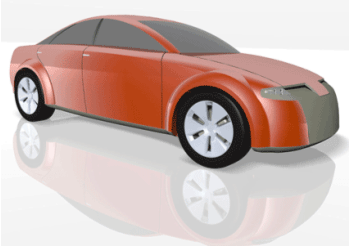 |
 |
Many institutes and companies are pledging
to improve their environmental policies. Leading US-based
catalogue company, Norm Thompson, is looking at ways to
improve their service using sustainable methods. The have
pledged a commitment to sustainability that includes eliminating
PVC from their product lines by 2006 due to its impact
on the environment in use and disposal. They plan to phase
in organic cotton and also develop recyclable and biodegradable
packaging. The first signs of progress in this area are
its inserts that are printed with non-toxic soy-based
ink and produced on recycled paper. |
Sustainable projects (www.edenproject.com
and www.ngrimshaw.co.uk)
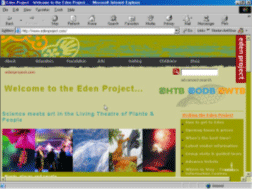 |
In
March 2001 the world's largest greenhouse opened its doors, the Eden
project. It says so much for the principles of sustainability,
enhancing understanding of interaction between people, plants and
resources. The showcase is situated in an old clay quarry in Cornwall and
contains 80,000 of the world's plants in its outstanding structural domed
shaped segments. The structure skin of the project is fabricated from
hexagonal geodesic panels, glazed with transparent ETFE foil pillows -
each weighing 1% of its glass equivalent and requiring a mere fraction of
the energy during manufacture. The structure lends itself to the
environment, needing no rock-blasts for its construction and giving its
viewers a breath-taking impact to symbolize their relationship with nature.
|
| � |
� |
| Following the successes of
the Eden Project 'Nicholas Grimshaw and Partners' have
been approached to create Ecolandia in Yvedon-le-Bains,
a Switzerland-based vision linking its people, the latest
technology and the environment. Within the areas of entertainment,
education, commerce and nature will overlap to create
30,000 square metres of informed sustainability. At the
centre are illustrations of four different ecological
systems of the planet each making up an 'Eco-dream' area.
|
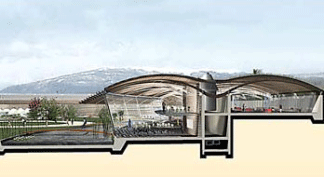 |
| � |
� |
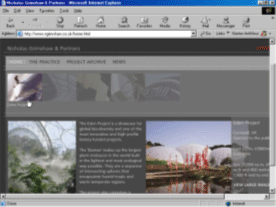 |
The building is semi-transparent
to allow light to seep in and the outer layer of the building
includes photovoltaic solar panels. 'Nicholas Grimshaw
& Partners' hope to echo the beauty of its surrounding
and outer structure of the proposed architecture with
a deeper inner beauty of the promotion of sustainability.
The project is due to open in the year 2006. |
|
|
|
 
 |
Inspirational Current Work
|
 |
�
|
 |
Toolkit Index

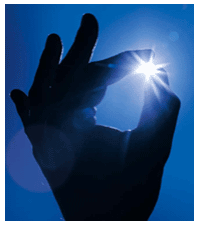
|
|

